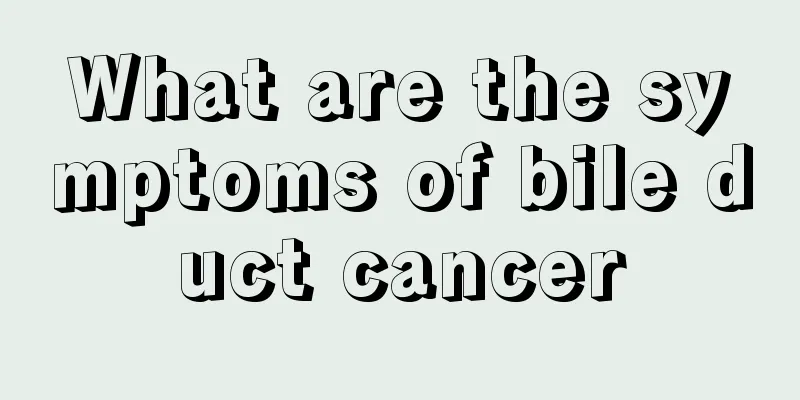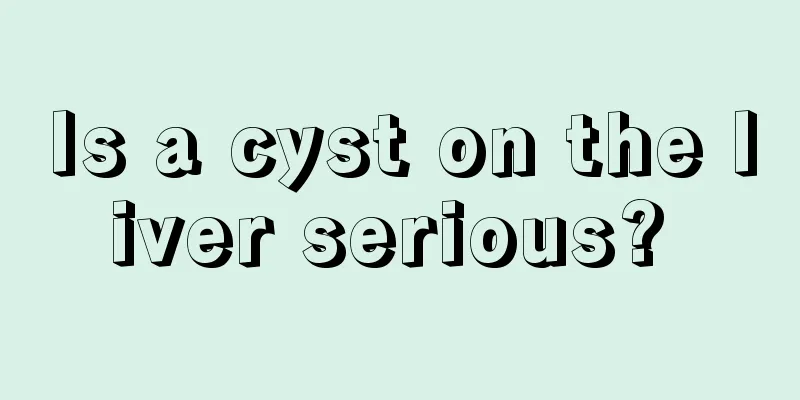What are the symptoms of bile duct cancer

|
As people age, their body functions decline and they become more susceptible to various diseases. Cholangiocarcinoma is a common disease among the elderly. Today we will introduce to you the symptoms of bile duct cancer so that you can detect the disease in time, grasp the best treatment opportunity, and improve the survival rate. Let's take a look. Weight loss and abdominal pain: Due to the infiltration of bile duct tumors and the occurrence of nausea, vomiting, etc., the body consumes too much energy, leading to nutritional deficiencies. Patients with bile duct cancer who lose about 50% of their weight have symptoms of bile duct cancer such as distension or discomfort in the right upper abdomen, loss of appetite, and weight loss. Clinically, these symptoms are often confused with cholelithiasis and cholecystitis and are easily misdiagnosed. Changes in urine and stool color: Along with jaundice, abdominal pain and other symptoms, patients may also have dark yellow urine, usually soy sauce color or strong tea color, and light yellow or clay color stools. In the late stage of bile duct cancer, if the tumor ruptures, bile duct bleeding may occur, leading to black stools, positive fecal occult blood test, and anemia in severe cases. This is also a symptom of bile duct cancer. Skin itching: Due to the increase of bilirubin content in the blood, the peripheral nerves of the skin are stimulated, causing skin itching, which may be accompanied by jaundice, tachycardia, bleeding tendency, mental depression, fatigue and abdominal distension. Jaundice: It is the most common symptom, accounting for about 36.5%. Jaundice is the result of bile duct obstruction, which is often progressive and deepens. The degree of jaundice is related to the location and degree of obstruction. Jaundice is deeper when the extrahepatic bile duct is obstructed, and lighter when the intrahepatic bile duct branches are blocked. Jaundice is deeper when the bile duct is completely obstructed, and lighter when the bile duct is incompletely obstructed. Occasionally, inflammation, spasm of the bile duct, tumor shedding, and papillary tumor displacement can cause jaundice to fluctuate. Middle and lower bile duct cancer often presents as painless cholestatic jaundice. The patient's urine is dark yellow or tea-colored, and the stool becomes lighter or clay-colored. The above is an introduction to the symptoms of bile duct cancer. I hope it will be helpful to you. |
<<: What are the prominent manifestations of patients with cholangiocarcinoma in the early stage
>>: What are the symptoms of bile duct cancer
Recommend
There are bumps under the tongue
The human tongue is a very important part because...
Be careful not to get sick from sleeping in this position
The blogger learned that the death rate from esop...
How long does it take for temporomandibular joint disorder to heal
Temporomandibular joint disorder is a relatively ...
How to deal with hands dirty by walnuts
The main reason why walnuts make your hands dirty...
What are the signs of femoral neck fracture necrosis
Femoral neck fractures are not uncommon, but we a...
What are the early symptoms of liver cancer? 7 early symptoms of liver cancer you should know
In an era when various diseases are prevalent, we...
Malignancy of gastrointestinal stromal tumor
The malignancy of gastrointestinal stromal tumors...
Why do I have a stomachache after taking enzymes
Stomach pain after taking enzymes may mean that t...
We must do a good job in lung cancer prevention in our daily life
Lung cancer is the most common cancer, and the nu...
What are the important things that patients with gastric cancer should pay attention to in their daily lives?
What are the important things that patients with ...
What is the best way to kill aphids on plant flowers?
Keeping some plants at home can green the environ...
Are mosquito coils harmful to humans?
Summer is here. The weather is hot in summer. If ...
What are the causes of crooked face
Some bad habits in daily life can easily cause fa...
What are Taiwanese snacks
Taiwan, although it is a small island region, acr...
How to calculate normal weight?
In today's society, thinness is considered be...









